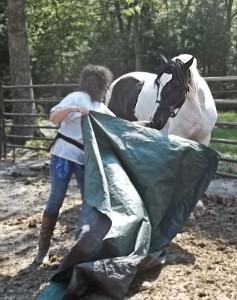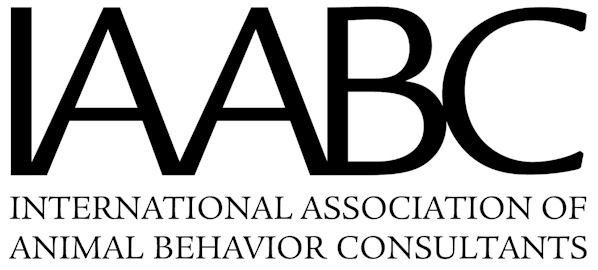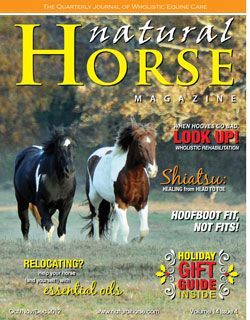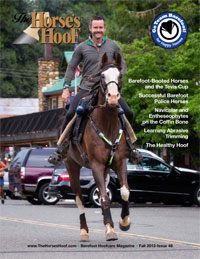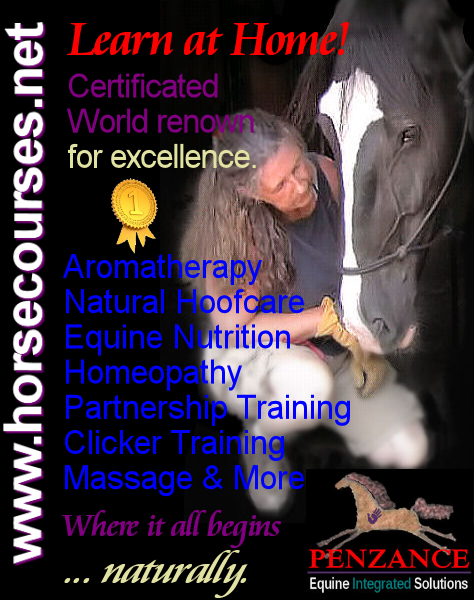| Written by Gwenyth Browning Jones Santagate |
| Monday, 13 December 2010 19:05 |
| What is the opposite of bucking? “Not bucking” you say? Nope, that’s not it. What is the opposite of “jigging”? Nope, wrong again. It’s not “not jigging”. What is the opposite of shoving? Hmmmm, “not shoving”? Nope … read on, my Friend.For every action there is a reaction and for every action there is a counterpart that is the opposite. The opposite of “bucking” would be walking forward. The opposite of shoving would be backing up. The opposite of jigging would be standing still or walking forward quietly. Instead of “punishing” an unwanted behavior in a horse why not think in terms of changing the negative behavior to a positive one and being able to reward your horse for doing something “right”. In essence, teaching the horse to do something else INSTEAD OF the offensive behavior? Give the horse a choice between the behaviors and making the “right choice” a rewarded experience. Sound pretty funky to you? Well, let’s take this scenario;
Susie has a 10 year old QH that is highly bred and extremely versatile. Susie has good riding background but limited ground training. (Notice that I said “Susie” has limited ground training vs. the horse having limited ground training!) … Roger, the QH, INSISTS on flying out the stall door whenever its opened, completely disregarding poor little Susie who tries desperately to stay out of his way yet at the same time, hang onto him. Susie’s trainer has suggested that everytime Roger begins to bolt out of the stall that Susie whack him on the chest with the crop. Susie’s TRIED to do this but Roger seems to be totally oblivious to Susie and her crop and manages every time to just keep on bargin’ through, dragging little Susie behind him. By now you’re thinking “I’d get a chain over that horse’s nose and that horse would learn a lesson or two!” Ah ha! What KIND of lesson would he learn? To be more respectful of Susie or the human standing in his way? Or would he learn to respond to pain, confusion, frustration and determination to get out of the stall and the experience even more quickly? Horses naturally want to get along with their herd members. Part of their social interaction is learning to get along. Learning their own place within the herd and learning to respect those above them in rank. Horses are, by nature, gentle animals with extremely strong ideas about “fairness”. Doesn’t seem fair to me to punish Roger for barging out of the stall when all he wants to do is be a horse and get outdoors to move! 1. Barging through and over human – represents lack of respect for one *supposedly* higher ranking. Represents the need to get out of confinement is greater than the need to be respsectful. Represents the “punishment” is not as strong of a stimulus as getting outside and responding to a natural instinctive call. — Issue of repecting higher ranking individual: Not the horse’s fault. Human needs to establish rank in a manner which the horse can understand. — Issue of the stronger instinctual behavior: There is no other motivator involved to override the instinctual need to get out of confinement. If confinement is associated with a pleasant experience that overrides the desire to leave, the horse will stick around! Food rewards, scritch rewards, etc. for a “right” behavior can override as motivators to initiate desired response in behaviors. Bribery, you say? No. M-o-t-i-v-a-t-i-o-n. Every mammal needs motivation to execute a behavior. The level of motivation must exceed other motivators in strength in order to prompt behavior. In other words, would you rather “work” for a pat on the head or a homemade chocolate cookie? Personally, the chocolate chip cookie wins hands down for me! How to teach the opposite of Barging … that is, standing still or stepping backwards away from human at stall door (better choice of behavior to teach) Behavior desired = stepping backwards 3 steps when stall door is opened and waiting, respectfully, for human to request forward motion. Must break down the behavior as it is comprised of several “steps”. 1st step would be to step backwards instead of barging forward. Set up a cue that you can use consistently when asking the horse to back up for you. Choose your “marker” of behavior, that is the audible sound you will use to indicate to the horse that it has executed the proper behavior. A mechanical clicker will work, a tongue click, a “kiss” sound, a “cluck” sound … a verbal Good! … whatever works for YOU but sound must be clear, crisp, short and easily identifiable by the horse. (I’ll use “click” just as the marker word for this article) Begin teaching the horse what a marker is: Ask horse to back up – use pressure and voice command. Instant the horse even thinks to back up, “click” and reward. Repeat several times until you’re receiving 100% result. Ask horse to now actually move body backwards (vs. merely indicating he’s “thinking” about it) … give the cue to back and keep the pressure on the horse until he actually MOVES his body back one step. Click! Reward. Repeat until horse is responding 100%. Now, do the same again but ask for 2 steps back. Then 3 and … now you’ve taught the horse the OPPOSITE of barging through you – you’ve taught him to respectfully back up 3 steps away from you! You’ve given him a CHOICE of behaviors to execute when you open that stall door. (Susie, this really isn’t difficult – just takes a bit of time and patience.) Now that you have the horse backing up, ask him “Whoa” … if he moves forward, ask him to back up and CLICK! and REWARD the second his stands without moving. Repeat and gradually request that he stand longer and longer until YOU say, “OK! Good job! NOW you may walk through the stall door!” … So now you’ve added more to the exercises by teaching the horse another opposite of “barging” behavior. You’ve taught him to stand still. Standing still is a CHOICE the horse makes which makes the behavior a decision and not an empty, thoughtless behavior. Think of the difference between, “I’m not doing anything!” and … “I’m doing nothing.” Two completely different behaviors. “Doing nothing” is a decision based behavior. “I’m not doing anything” is a thoughtless, lacking in thought, of doing anything. So, the opposite of “I’m not doing anything” is … “I’m doing *nothing*.” In essence, I’m also saying that we’re teaching the barging horse to “do nothing” while standing quietly and waiting for his human to request forward movement. So, another “opposite” of barging would be to do “nothing”. Whenever you’re working around a horse it is imperative to always think of the consequences of what YOUR behavior and requests will reap from the horse. Every action has a reaction. Our requests have reactions from the horse. They can be thoughtless reactions or they can be thought-FILLED choices that the horse makes. Every action has an opposite. Think of the opposite actions that your horse chooses to execute today for you and start teaching him the proper action/behavior that you REALLY want. Bucking? Move forward. Rearing? Move forward. Barging? Step back and wait. Jigging? Walk quietly. Doesn’t lift hoof? Lift hoof! Doesn’t lead? Give to pressure. Think of your opposites and start working on them today. You’ll have a safer day and a much more pleasant relationship with your horse. PS. Susie? If that’s you, drop me an email if you’re still getting “stuck” in front of your barging horse and I’ll see what I can do for you! Simply write to caballus@charter.net! The copyright of the article Opposite Illusions is owned by Gwenyth Browning Jones Santagate. Permission to republish Opposite Illusions in print or online must be granted by the author in writing. |

